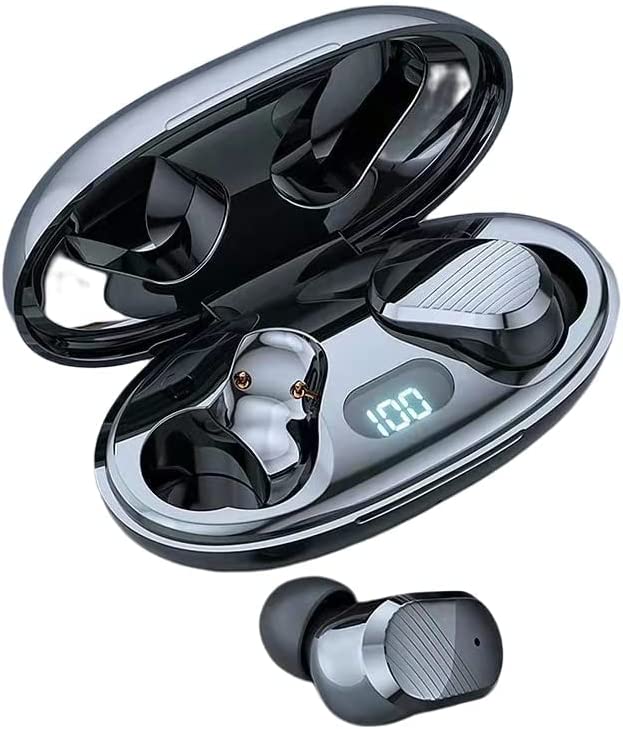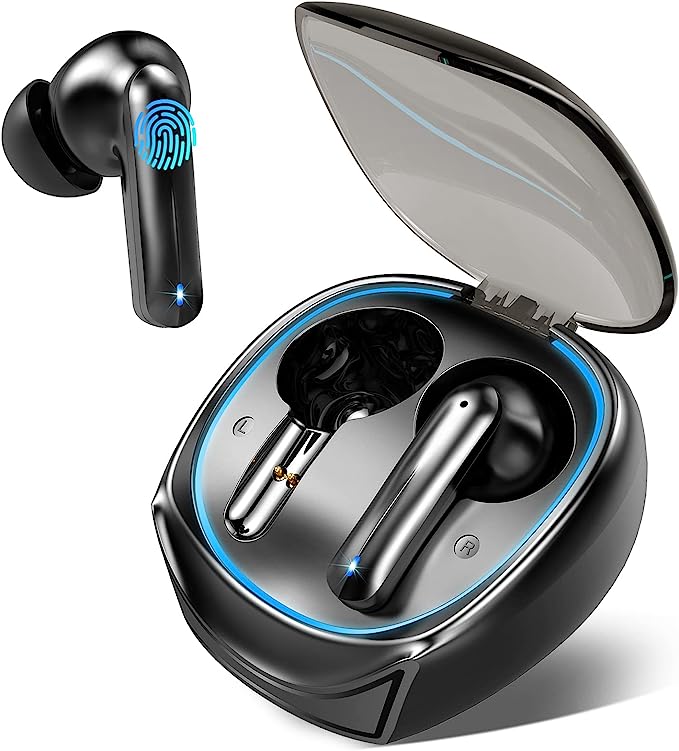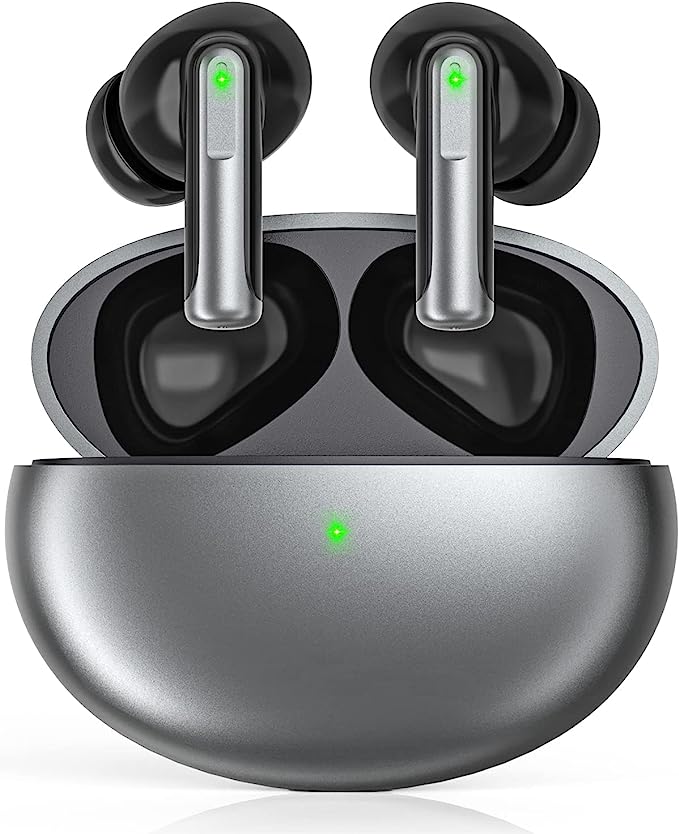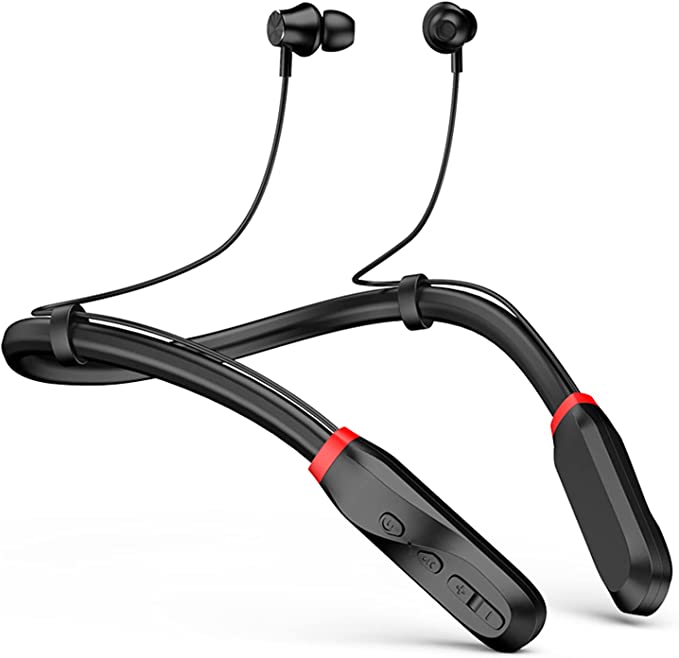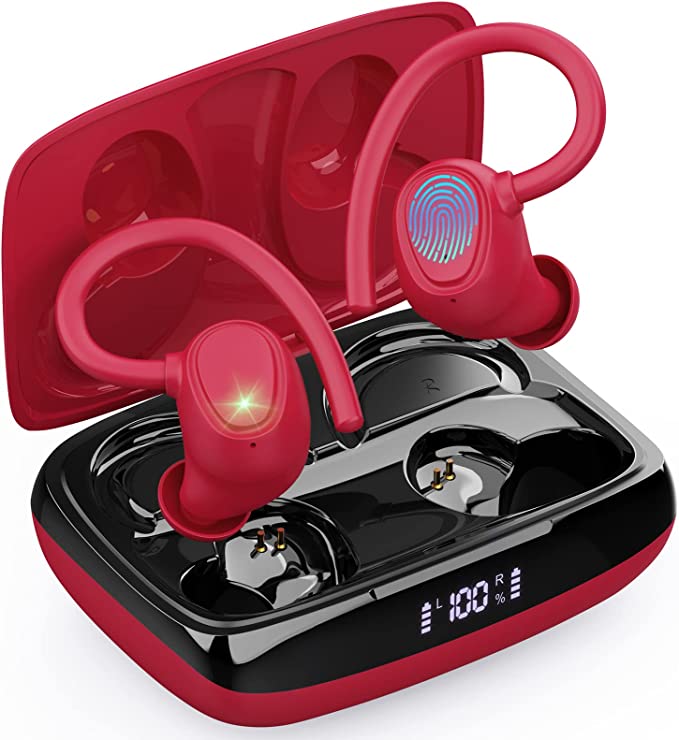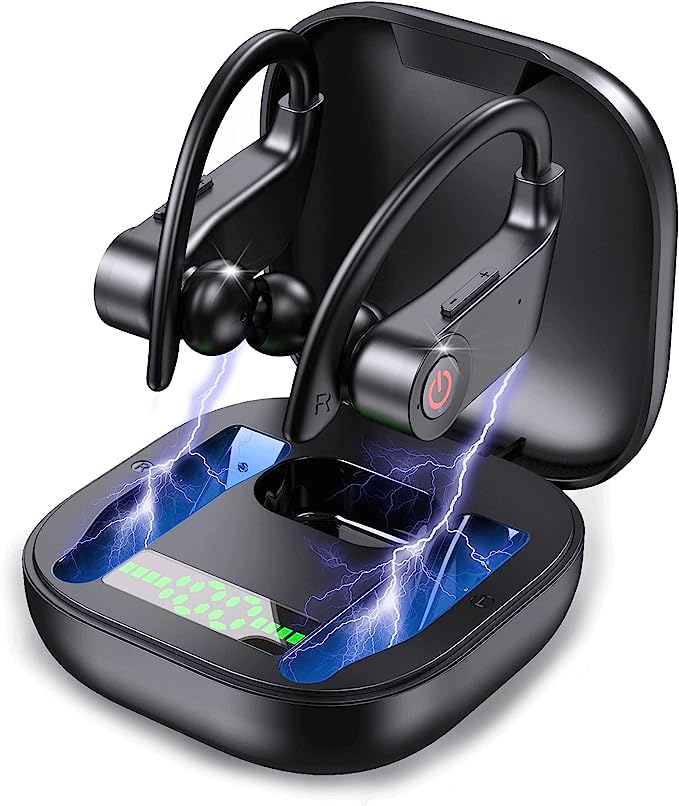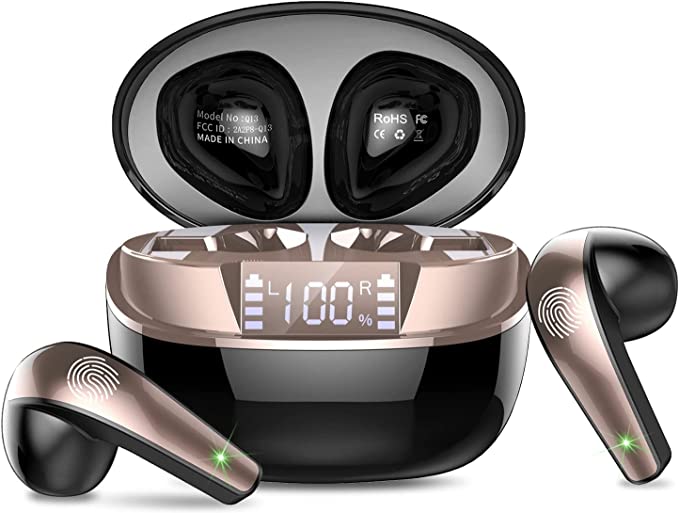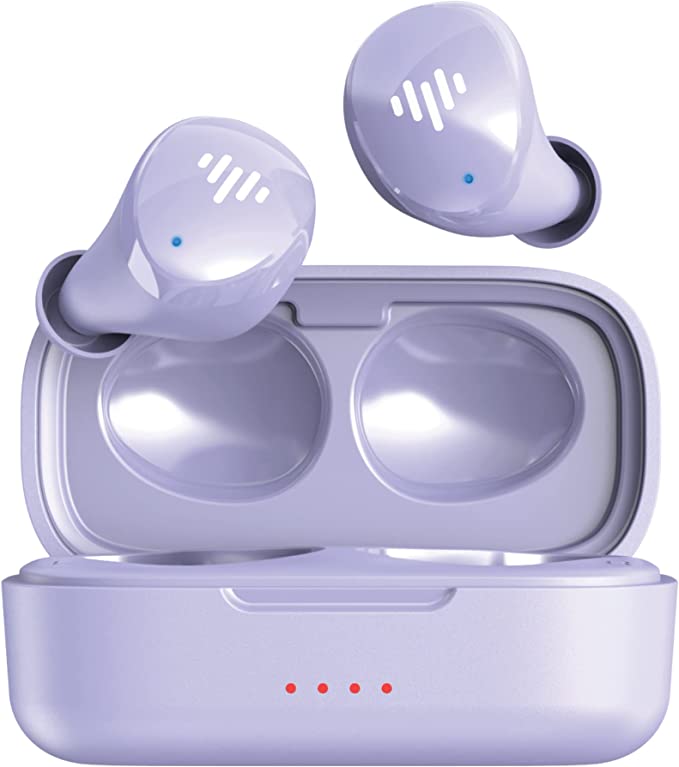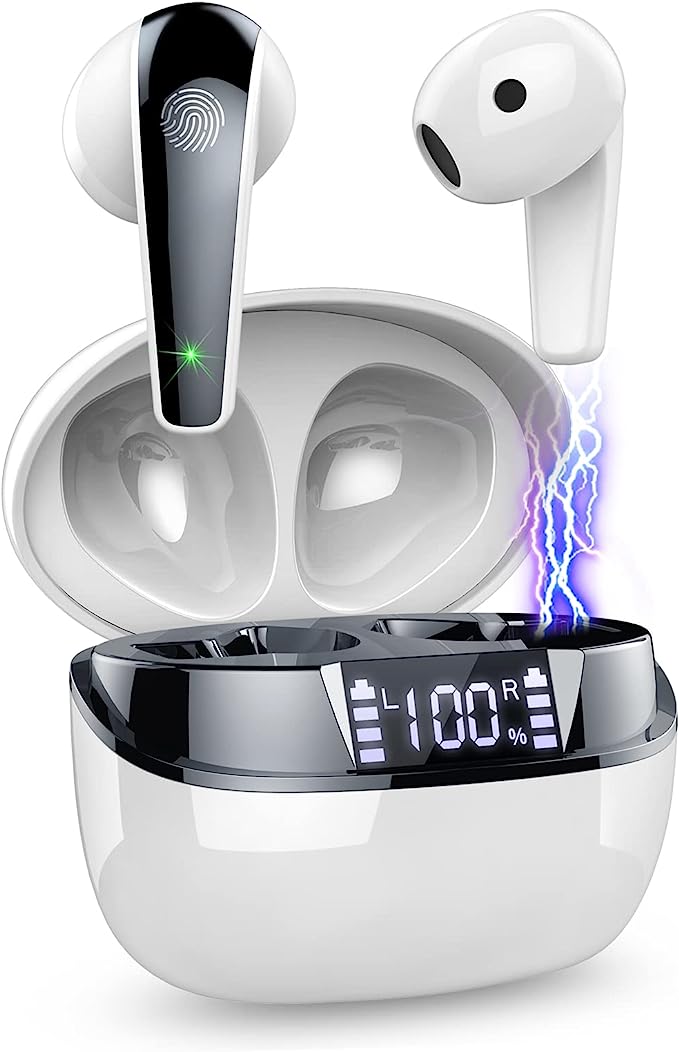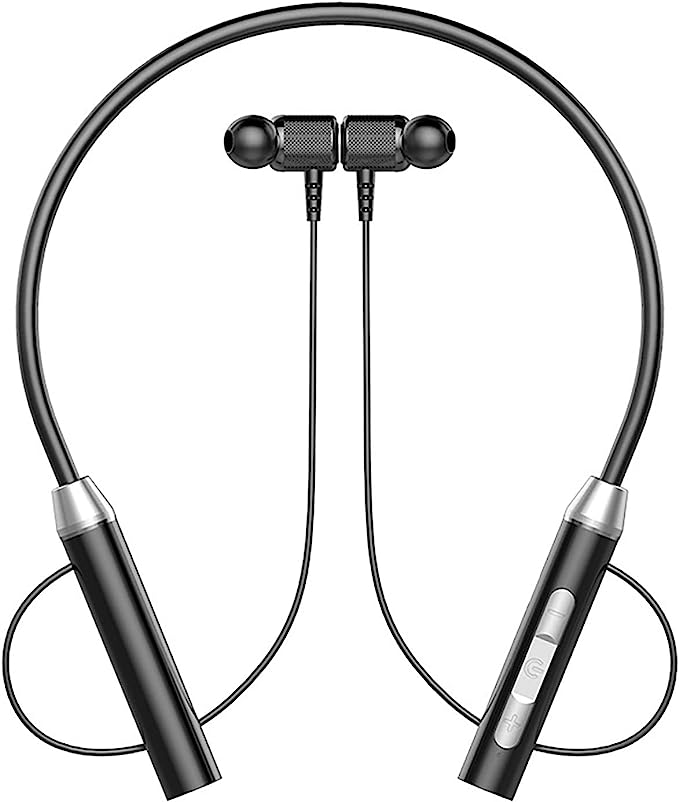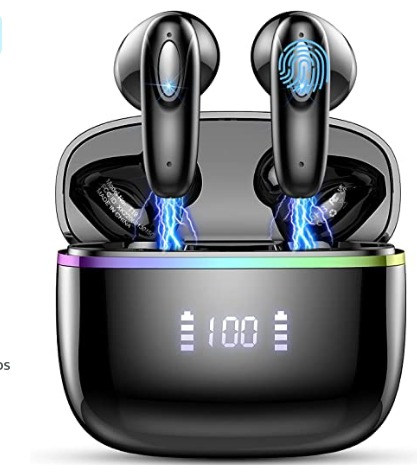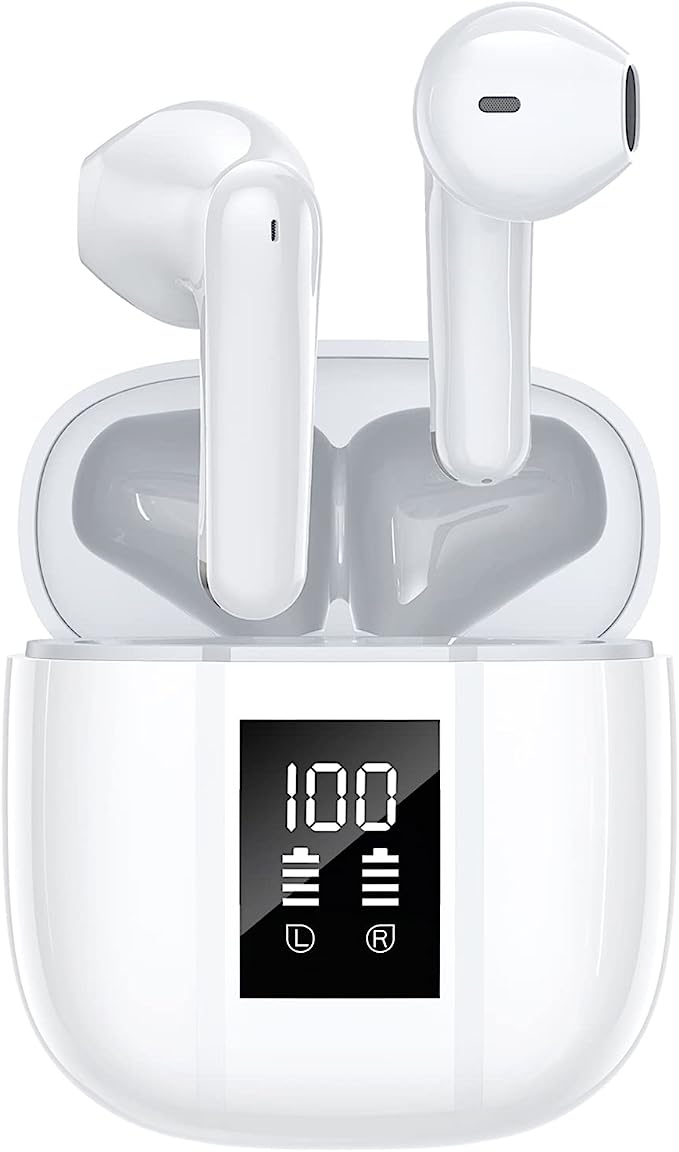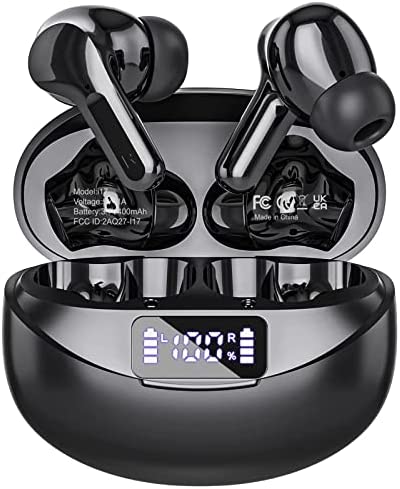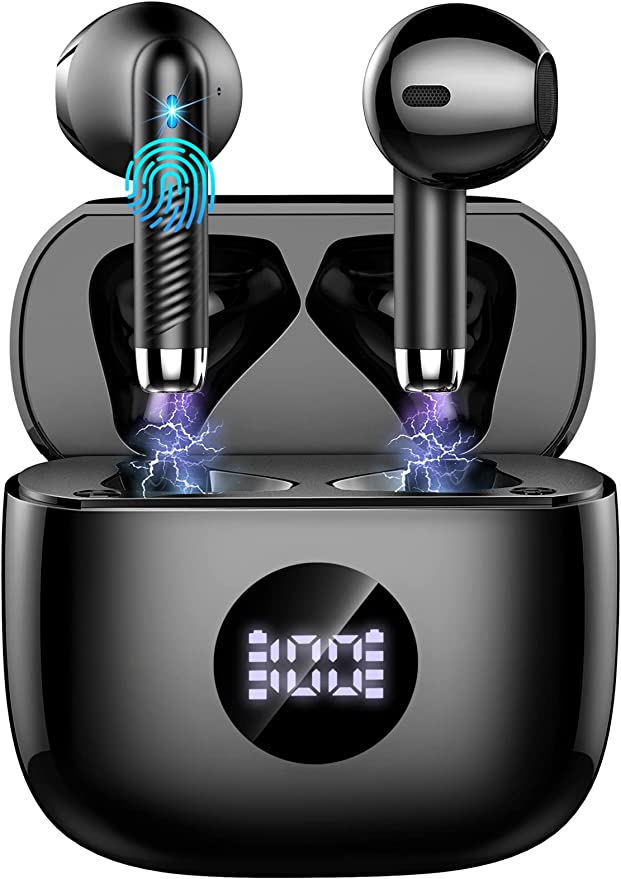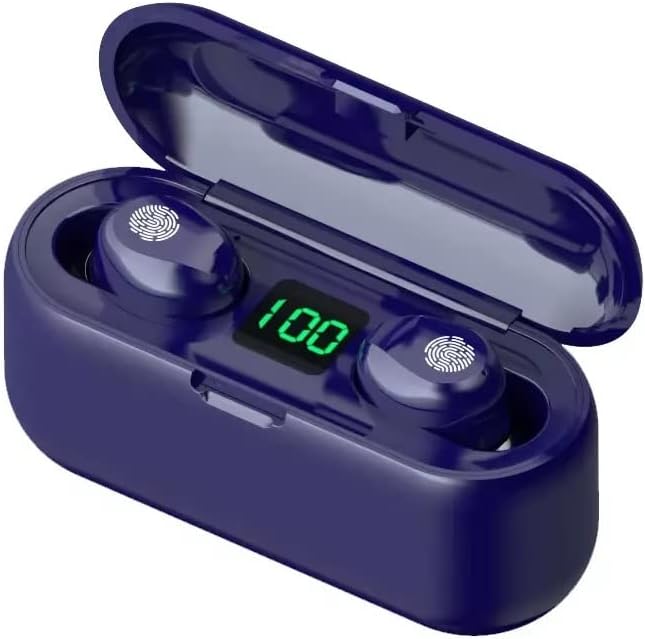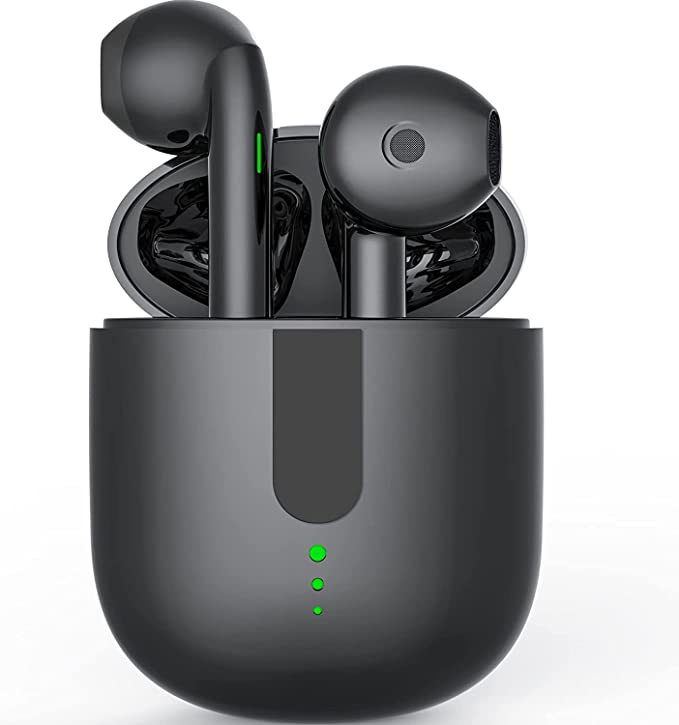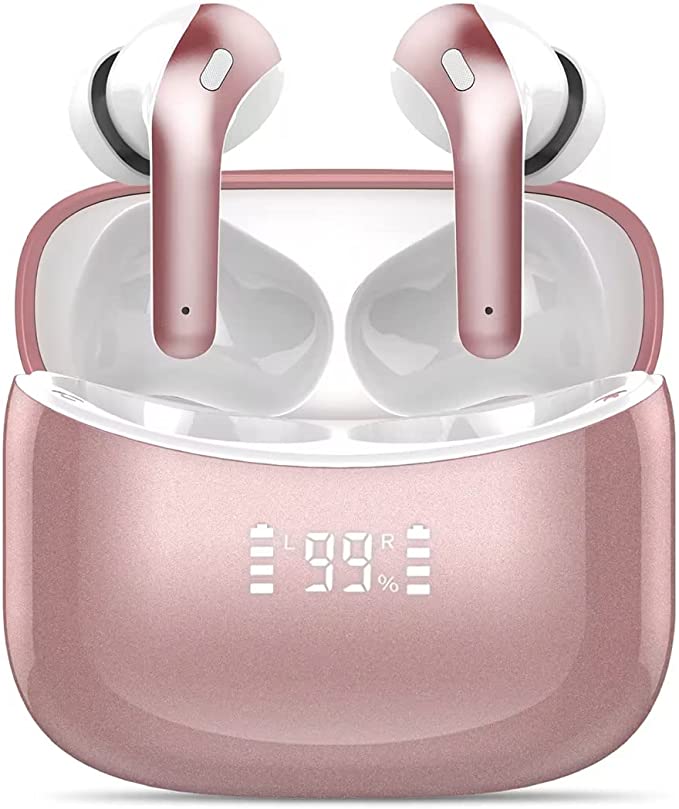Keklle2 Wireless Earbuds: A Budget-Friendly Option
Update on June 23, 2025, 12:59 p.m.
The digital marketplace is a siren’s call for bargain hunters, and nowhere is this more apparent than in the realm of personal audio. Wireless earbuds, once a premium accessory, can now be found for prices that barely exceed the cost of a morning coffee and pastry. Take, for instance, the Keklle2 Wireless Earbuds, listed on Amazon for a startling $13.99. Their product page unfurls a familiar banner of enticing features: Bluetooth 5.1, a substantial 2000mAh charging case that even promises to juice up your phone, IPX7 waterproofing, “HiFi Stereo Audio,” and CVC 8.0 noise reduction. It sounds almost too good to be true. But beyond these bullet points, what combination of engineering, established science, and inevitable compromise defines such an aggressively priced piece of technology? This isn’t just a review; it’s an exploration into the heart of budget wireless audio.

Decoding Connectivity: Is Bluetooth 5.1 a Game Changer on a Budget?
Wireless earbuds live and die by their connection, and “Bluetooth 5.1” is often touted as a significant upgrade. Let’s briefly travel down memory lane. Bluetooth technology, operating in the globally available 2.4 GHz Industrial, Scientific, and Medical (ISM) radio band, has steadily evolved. Each major version generally aims to improve upon its predecessors in key areas: data transfer speed, operational range, power consumption, and connection stability. Bluetooth 5.1, for example, introduced features like Angle of Arrival (AoA) and Angle of Departure (AoD) for more precise device location finding, though it’s highly unlikely such advanced features are implemented in earbuds at this price tier. More relevant for audio devices are potential enhancements in connection robustness and power efficiency over older standards like Bluetooth 4.x. The Keklle2 earbuds claim this modern standard, which, in an ideal world, should translate to a more stable link to your phone and perhaps slightly better battery performance from the earbuds themselves.

For audio transmission, Bluetooth relies on specific “profiles.” The Keklle2 supports common ones: HSP (Headset Profile) and HFP (Hands-Free Profile) are fundamental for call functionality, allowing you to use the earbuds as a wireless headset. A2DP (Advanced Audio Distribution Profile) is the workhorse for streaming stereo music from your device to the earbuds. AVRCP (Audio/Video Remote Control Profile) lets you control playback (play, pause, skip) directly from the earbuds. These are all standard fare. The promise of “one-step pairing” also leans on the capabilities of the Bluetooth chip. After the initial setup (finding “HBQ-Q82TWS” in your phone’s Bluetooth menu), the earbuds should ideally reconnect automatically when taken out of their case. This relies on a quick “handshake” process where the earbuds recognize a previously paired device. However, as some user feedback for the Keklle2 notes (“a little finicky”), the real-world execution of even standard Bluetooth features can vary depending on the quality of the chipset, antenna design, and firmware – all areas where costs might be cut in budget devices.

The Power Equation: Understanding the 2000mAh Case and Battery Life Claims
One of the most eye-catching specifications for the Keklle2 is its 2000mAh charging case. But what does “mAh” (milliampere-hour) truly signify? Think of it like the capacity of a fuel tank in a car: a larger number generally means more stored energy. The earbuds themselves contain much smaller batteries, and the case serves to recharge them multiple times on the go. This is a fundamental characteristic of True Wireless Stereo (TWS) earbuds. The batteries involved are typically lithium-ion or lithium-polymer, chosen for their high energy density and rechargeability. It’s important to remember, as a general scientific principle, that all rechargeable batteries have a finite number of charge-discharge cycles before their capacity begins to noticeably degrade.
Keklle2 claims this 2000mAh case can recharge the earphones approximately 40 times, with each earbud charge yielding up to 5 hours of playtime. Let’s do some very rough estimation. If the case provides 40 charges and each charge gives 5 hours, that’s 200 hours of potential playtime from a fully charged case. For this to be true with a 2000mAh case, each earbud (or the pair together per “charge cycle” from the case) would need a relatively small battery. For instance, if a single earbud charge consumes 50mAh (2000mAh / 40 charges), then two earbuds might be around 100mAh for a stereo “charge.” While plausible, actual efficiency losses in charging and variations in earbud battery size make such claims optimistic. The advertised 5-hour playtime per earbud charge is a common figure for modern earbuds, but this can be heavily influenced by volume levels and the type of audio content.
Interestingly, user ratings for the Keklle2’s battery life average a mere 2.2 out of 5 stars. This starkly contrasts with the impressive on-paper capacity of the case. Several factors could contribute to this discrepancy: the earbuds themselves might have poor battery health or high idle drain; the charging case might not deliver its full capacity efficiently; or users’ perceived playtime might be shorter than expected due to intermittent use patterns.
A genuinely useful perk is the case’s ability to act as an emergency power bank for your phone via a USB output. While 2000mAh won’t fully charge most modern smartphones, it could provide a crucial boost in a pinch. However, the output current (Amps) of such features on budget cases is often low (e.g., 1A or less). Recalling basic electrical principles, Power (Watts) = Voltage (Volts) × Current (Amps). A standard USB voltage is 5V. So, a 1A output delivers 5W, which will charge a phone relatively slowly compared to dedicated fast chargers. The LED display on the case, indicating remaining charge, is a simple but undeniably convenient touch.
The Sound of Savings: “HiFi Stereo” and “CVC 8.0 Noise Cancelling” Under the Microscope
For any audio product, sound quality is paramount. The Keklle2 earbuds make bold claims of “HiFi Stereo Audio” and “Lossless HD Rendering Technology,” promising “crystal crisp treble” and “deep bass.” “HiFi,” or High Fidelity, ideally means the reproduced sound is extremely faithful to the original recording, with minimal distortion and an even frequency response. “Lossless HD Rendering” suggests that the audio signal is processed and delivered with minimal data loss, preserving nuances.
However, achieving true HiFi sound involves a complex interplay of high-quality audio drivers (the tiny speakers in the earbuds), sophisticated acoustic chamber design within the earbud housing, meticulously tuned digital signal processing (DSP), and support for high-resolution audio codecs. These elements typically come at a significant cost. The most common and basic Bluetooth audio codec, SBC (Subband Codec), which is mandatory for A2DP compatibility and thus likely what these earbuds primarily use, is a “lossy” codec. This means some audio data is discarded to reduce file size and bandwidth requirements, which can impact fidelity. While advanced codecs like AAC or Qualcomm’s aptX family offer better quality, their inclusion adds to licensing fees and hardware requirements, making them rare in the sub-$15 category.
User feedback on the Keklle2’s sound quality often includes descriptors like “tinny,” “scratchy,” and “not good quality.” This suggests that the “HiFi” aspiration may fall short in reality, a common scenario where the physical limitations of budget components (smaller, less capable drivers, and basic tuning) cannot match ambitious marketing language. It’s like comparing a meticulously crafted gourmet meal to a fast-food burger; both are edible, but the quality of ingredients and preparation leads to vastly different sensory experiences.
Another highlighted feature is “CVC 8.0 Noise Cancelling.” This is a crucial point of potential misunderstanding for many consumers. CVC, which stands for Clear Voice Capture (a technology often associated with Qualcomm chipsets, though similar DSP techniques exist), is designed to improve microphone quality during phone calls. It uses algorithms and often multiple microphones to reduce ambient noise picked up by the mics, so your voice sounds clearer to the person on the other end of the call. It does not provide Active Noise Cancellation (ANC) for the listener. ANC is a more complex technology that uses microphones to detect external sounds and then generates opposing sound waves to cancel them out, creating a quieter listening environment for the earbud wearer. ANC is a premium feature generally found in more expensive earbuds. So, while CVC 8.0 can enhance call clarity, it won’t magically silence the world around you while you’re listening to music.

Built for the Elements, or Just a Splash? IPX7 Waterproofing Explained
For those with active lifestyles or simply prone to an occasional mishap, the “IPX7 Waterproof Headphones” claim is appealing. The IP Code, or Ingress Protection Code, is an international standard (IEC 60529) that classifies the degrees of protection provided by enclosures of electrical equipment. In “IPX7,” the “X” means the device hasn’t been specifically rated for dust ingress (though some level of dust protection might still be present due to the water seals). The “7” is the critical part for water resistance: it signifies that the earbuds are protected against the effects of temporary immersion in water under standardized conditions – specifically, up to 1 meter of water for a duration of up to 30 minutes.
This makes the Keklle2 earbuds, if they genuinely meet this standard, suitable for sweaty gym sessions, running in the rain, or even surviving an accidental drop into a sink or puddle. However, it’s vital to understand the limitations. IPX7 does not mean they are designed for swimming, as the dynamic pressure of moving through water, especially at depth, can exceed the static pressure test conditions. It also doesn’t guarantee protection against high-pressure water jets or submersion in liquids other than fresh water (like saltwater or soapy water, which can be more corrosive or compromise seals). The waterproofing typically relies on well-fitted casing, rubber gaskets around openings, and sometimes hydrophobic nano-coatings applied to internal electronic components. The durability of these seals can also degrade over time and with wear and tear.

Interaction and In-Ear Feel: Touch Controls and Ergonomic Design
Modern earbuds are increasingly moving away from physical buttons to touch-sensitive controls, and the Keklle2 follows this trend with its “Touch Control” interface. These controls typically utilize capacitive sensing, where the sensor detects the slight change in electrical capacitance caused by the touch of a finger. The advertised benefits are a sleeker design and avoiding the discomfort of physically pressing a button into your ear canal. The Keklle2 claims these touch panels allow for managing calls, music playback (play/pause, skip tracks), volume adjustment, and activating voice assistants like Siri. While convenient, touch controls can sometimes be overly sensitive, leading to accidental activations, or occasionally, not responsive enough, requiring multiple taps. The quality of implementation varies widely.
The “Ergonomic Comfort Sport Design” and the inclusion of “gel-flexible silicone earcaps” in three sizes (S, M, L) are important for both comfort and performance. A proper in-ear fit, achieved by selecting the correct eartip size, is crucial. It ensures the earbuds stay securely in place, especially during physical activity (“Whether you’re running or jumping, the wireless headphones will stay securely in your ears”). Beyond stability, a good seal in the ear canal significantly impacts passive noise isolation (physically blocking out some ambient sound) and the perceived bass response. If the seal is poor, bass frequencies tend to “leak” out, resulting in a thinner sound. The lightweight plastic construction also contributes to comfort during long listening sessions.

The Verdict on Value: What $14 Buys You in the Real World of Wireless Audio
The Keklle2 Wireless Earbuds serve as an illuminating case study in the world of ultra-budget consumer electronics. On paper, they present an impressive suite of modern features. However, the journey from a specification sheet to a satisfying user experience is paved with nuanced engineering choices, component quality, and manufacturing consistency – all of which are heavily influenced by cost.
What becomes clear is that while technologies like Bluetooth 5.1 and IPX7 are standardized, their mere presence doesn’t guarantee flawless performance or premium quality. The implementation matters immensely. The significant discrepancy between the claimed battery capacity of the case and the low user ratings for battery life, coupled with complaints about sound quality (“tinny,” “scratchy”) and durability (“fell apart,” “broke after 1 week”), highlights the inherent trade-offs.
For a consumer considering such a product, the key is to manage expectations. If the primary need is a very inexpensive pair of wireless earbuds for occasional, non-critical listening, or for situations where loss or damage is a high probability (perhaps for a child, or as a gym-only pair where sweat-proofing is the main concern), then perhaps the $14 price tag justifies the potential compromises. The power bank feature in the case, even if slow, could be a genuinely useful emergency backup.
Ultimately, navigating the sea of budget electronics requires a degree of tech literacy. Understanding what a feature like “CVC 8.0” actually means (call enhancement, not personal noise cancellation) or recognizing that “HiFi” is a highly subjective term when applied to entry-level audio can prevent disappointment. The Keklle2 earbuds, like many similar products, demonstrate that while technology is becoming more affordable, the fundamental relationship between price, component quality, and overall user experience often holds true. Value, in this context, isn’t just about the lowest price; it’s about finding an acceptable level of performance and reliability that aligns with one’s specific needs and, crucially, one’s informed expectations.
